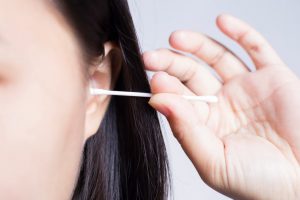
Maybe you’re not fully aware, but cotton swabs are incredibly dangerous for your hearing due to two things.
For starters, you’re jabbing an object into your ear without realizing you could be damaging your eardrum. And secondly, if you have impacted earwax, you’re unintentionally jamming it further into the ear, which can lead to complications such as hearing loss.
It is well-known that earwax can contribute to temporary hearing loss along with cases of vertigo, but what can increase the risk of this is your ear cleaning habit.
Audiologist Maryam Ghaderi explained, “People use cotton swabs all the time and they think they are taking wax out, but they are pushing the wax to the side. The more we do that over time… it builds up a hard wall of wax.”
Hearing loss as a result of earwax is more common among seniors but can affect anyone at any age. Seniors are at a greater risk of earwax-induced hearing loss because wax can harden, and as we age, skin softens. This can cause the ear canal to collapse, essentially squishing the earwax in the ear, impacting it.
Instead of using a cotton swab after a shower to clean your ear, use a towel instead. If you do need a cotton swab, do not insert it too far in the ear, keeping it mainly on the outside of the ear. And above all, do not use any other object like a bobby pin or end of a screwdriver to clean your ears. This can greatly increase the risk of injury and even infection.
If earwax is causing pain, hearing loss, or itchiness, then simply see your doctor for proper removal. It may also be a wise practice to use a drop of olive oil in the ears to soften the wax up, so it falls out on its own.
Also read:
- Sinus infection can cause clogged ears, ear pain and temporary hearing loss
- How to Tell If You Need Your Earwax Removed